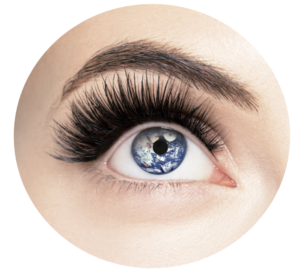WHAT IS A CATARACT?
The leading cause of blindness in the world, cataracts are responsible for opacification of the lens (the normally clear and transparent lens of the eye that allows light to pass through), gradually impairing vision.
Caused mainly by ageing, this eye condition affects half of the population between 65 and 74 years of age and two-thirds (66%) of the over 75 year-olds, regardless of gender. Injury, smoking and excessive exposure to the sun can also accelerate the onset of this condition.
When it develops, cataracts lead to a progressive and irreversible loss of vision. Wearing glasses as first-line treatment is no longer sufficient to correct it. Surgery is the only effective alternative to restore correct vision.
WHAT DOES CATARACT SURGERY INVOLVE?
The purpose of this procedure is to remove the opaque lens and replace it with an artificial lens (an implant). Generally carried out under local anaesthetic by an ophthalmologist, the procedure is performed under a microscope in the operating theatre and takes approximately 15 to 20 minutes.
The procedure involves several steps:

This is carried out a few days before surgery to calculate the necessary power of the intraocular lens to replace the opaque lens.
An eye drop is administered to dilate the pupil.
Anaesthetic drops are administered to numb the eye.
The cornea is cut.
A gel is injected into the eye to protect it and support the intraocular structures.
This incision provides access to the lens.
The lens becomes fragmented into several pieces via ultrasound and then removed by gentle suction.
The intraocular lens is inserted into the capsular bag where the lens was located.
The artificial lens becomes an integral part of the eye. No additional treatment or specific care procedure is required. Surgery can be performed on both eyes at the same time or a few weeks apart.
The mode of hospitalisation depends on the patient’s clinical profile and is discussed with the ophthalmologist. In most cases, this procedure is conducted on an outpatient basis. A third party is required to accompany the patient to their home.
SIDE EFFECTS FOLLOWING THE SURGICAL PROCEDURE
Depending on the type of intraocular lens inserted and the patient’s general condition, the following side effects may occur:
- Insufficiently tight scarring;
- Partial drooping of the upper eyelid;
- Haematoma of the white of the eye or eyelid;
- Increased sensitivity to light;
- Inflammation of the eye;
- Increased intraocular pressure;
- Deformation of the cornea (astigmatism);
- Double vision

POST-OPERATIVE FOLLOW-UP
A protective shell is placed on the eye after surgery. This must be worn for several days following the operation to prevent rubbing or infection caused by external elements (dust, projectiles, smoke, etc.).
The ophthalmologist will check the patient’s vision and intraocular pressure within 24 to 48 hours. Additional follow-up will be carried out up to one month post-surgery to assess the benefits obtained and ensure good visual acuity.
NECESSARY PRECAUTIONS
- Rest for 24 to 48 hours following the procedure.
- Avoid activities involving the eyes (reading, looking at screens, etc.)
- Avoid carrying heavy objects.
- Avoid dusty locations and swimming (both pool and sea) for approximately one month.
- Do not wear make-up for a temporary period.
POINTS TO NOTE:
- Smoking increases the risk of complications in any surgical procedure.
- Stop smoking 6-8 weeks before the procedure to eradicate this additional risk.
- Active smokers are advised to talk to their doctor, surgeon and anaesthetist.
